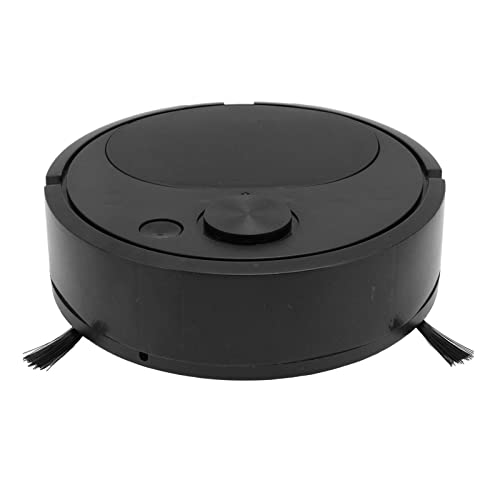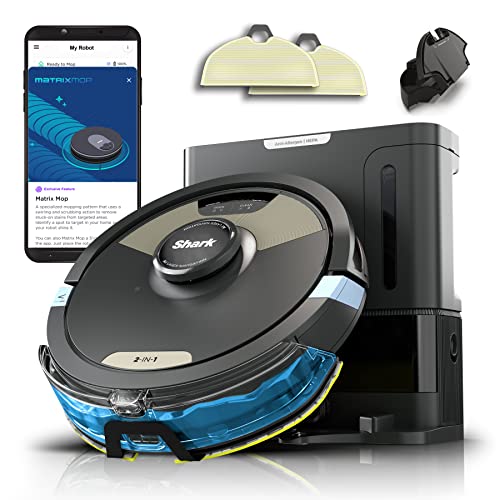How The 10 Worst Robot Vacuum FAILS Of All Time Could Have Been Preven…
페이지 정보
작성자 Latoya 댓글 0건 조회 14회 작성일 24-04-01 02:11본문
 How to Find the Best Robot vacuum robot
How to Find the Best Robot vacuum robot If you don't need advanced features like mapping and you do not mind cleaning your trash bin every 60 to 90 days, a basic robotic vacuum is probably suitable for you. Pick a model that has an uncluttered base that can work with voice assistants.
If you don't need advanced features like mapping and you do not mind cleaning your trash bin every 60 to 90 days, a basic robotic vacuum is probably suitable for you. Pick a model that has an uncluttered base that can work with voice assistants.It is the best robo-vacuum we have tested at picking up dirt and pet hair from hardwood floors, tile, and low-pile carpeting. It can also map out and create virtual no-go zones in rooms or areas.
1. Powerful Suction
A robot vacuum is able to stay up with the dust, pet hair and dander that accumulates on your floors on a daily basis. It can also cut down on how often you need to do a deeper clean, saving your time and effort. The most effective models feature powerful suction that can clean up most mess with ease and leave your home clean.
Choosing a robot vacuum that is also able to mop will help you get more space by using just one machine. This could be especially helpful in larger homes. There are models with a tank for water either built into the chassis or as an additional piece that you can swap out after vacuuming. You'll need to empty and refill it, though, so this is an additional chore that requires some extra effort on your part.
In a perfect world you would clean your floors first before using your robot vacuum, preventing it from crashing into anything. But in most homes, this isn't feasible or desirable. Most robots allow you to utilize an app that you can install on your phone to create virtual barriers that the robot will observe. Certain models have no-go zones that you can mark areas you don't wish it to enter. For instance the child's room or a pile cords in a corner.
This model is a good option for those looking for a basic robot cleaner that does not have all the bells and whistles. It's quiet, it works on both hard floors as well as low-pile carpets and can be programmed using the app to vacuum and mop at your convenience. It's got a long battery life that can last for up to 180 minutes before it needs to recharge.
2. Easy to Operate
Robot vacuums generally require very little from you. They make use of navigation tools such as sensors, lasers and cameras to maneuver around obstacles and suck up dust, food crumbs and pet hair from hard floors, tile, hardwood and low-pile carpets. A lot of models come with boundaries strips that help them stay inside a room. Higher-end models can be programmed to wake up at a specific time and start cleaning. Certain models come with fall detection technology that helps them avoid falling down a flight of stairs or becoming tangled in cords.
If you want to control your robot vacuum from the comfort of a couch, search for models that can work with voice assistants like Alexa and Google Assistant. You can also look for models with Wi-Fi connectivity that allow you to start cleaning from any location via an app. Depending on how big your home is, you might prefer a model that has a long battery life and a large dust bin that doesn't have to be emptying frequently.
Some robot vacuums can also be mopping machines. They use water reservoirs to wash the floor. This is ideal for mopping, but not great for difficult messes such as pet poop and other spills. There are hybrids that have a removable microfiber pad for mopping, or you can choose self-emptying models that let you go for 30 to 60 days without having to empty the base.
3. Smart Mapping
Certain robots utilize advanced mapping technology to build a detailed map as they clean. This helps them avoid bumping into furniture and tripping on cords or chair legs. This feature is only available on higher-end models however, it lets your robot have a thorough understanding of the layout of your home and know where to go when the battery runs out.
The majority of robots allow you to create virtual barriers. This can be done using an app or physically-based boundary strips. This lets you block off zones that you don't want your robot to venture into, so it can concentrate its attention on areas and rooms that require the most cleaning.
Many robots can also automatically navigate to different floorings based on the type of flooring they're cleaning, be it that's switching between carpet and hard flooring or focusing on specific areas of your home, like corners and baseboards. This feature proved to be useful during our tests and helped improve the performance of the vacuum on both hardwood flooring and carpet flooring with low pile. It is important to secure any furniture or cords that are loose prior to using your robot vacuum, so that it doesn't become caught.
4. Remote Control
Most robot vacuums have WiFi capabilities and can be controlled using voice commands, Google Assistant, Amazon Alexa or Siri Shortcuts. Many robot vacuums are connected to smart home systems and create an outline of the area they clean after each session. This lets them "learn" how your home is laid out and plan more efficient routes in future cleaning sessions. Some have obstacles avoidance built-in, which prevents them from causing damage to furniture and getting stuck on objects like loose charging cables or pet hair.
Most robots come with a remote you can use to pilot them around your home. The majority of robots can be operated by mobile applications that comes with more features. You can set up a variety of cleaning schedules, and create a list with your favorite rooms. You can also guide the robot by using direction Arrows.
Some models have no-go zones. These are virtual barriers that you can create in the app to stop the robot from entering specific areas (like kid's toys or dishes and dog beds). Other apps allow you to make the map of your house and give the robot detailed information about your floors. The Roborock S7+ app has several useful features to help you clean the house. However its interface isn't as sleek as iRobot or Shark.
5. Long Battery Life
Robotic vacs that can clean a whole house without stopping to recharge or empty their bins of dust save you time and effort. Some are compatible with smart home platforms like Alexa, Google Assistant and Siri Shortcuts for hands-free operation. They can also make an outline of the space that allows you to program them for specific areas or rooms, and to stay clear of obstacles.
Most robot vacs have some degree of object detection, but higher-end models like the irobot That vacuums and mops j7 come with advanced features such as "home mapping" and advanced obstacle avoidance that will make your life easier (although our test bot did once "eat" the socks of a pair). socks). If you're looking to push your home maintenance even further, look for a robotic mop that comes with an water tank that can be filled and then empty.
While no of the models we tested could compete with the dirt-picking power of a stand-up vacuum, they did a great job cleaning hard floors as well as carpets with low pile. They are great in sweeping up dust and debris, food dust, tracked-in dirt, and pet hair. They are also able to tackle stray cat litter and metal screws and nuts. The most effective robot vacuums are able to effortlessly work around furniture, and they are great at cleaning corners and edges as well. For an affordable model that can work by itself and is reasonably priced take a look at the Eufy 11S.
6. Convenient Self-Charging
With the right configuration and the right setup, a robotic vacuum can help you keep your home looking and feeling fresh regularly, without much work from you. You can schedule cleanings through the app, and create no-go zones so that the robot won't step on your favorite chair or plants. Many of our top picks also automatically empty their trash bins and clean their docking stations for you.
The best robot vacuums can be programmed to clean your floors regularly for weeks or months at a time, making it easier to save time and effort of manually sweeping or mopping your floors every week or every day. This helps you spend more time doing things you like and cuts down on the amount of time your floors have to be cleaned manually.
In our tests, Q Revo was able to capture fine particles such as baking soda and oatmeal. It also grabbed larger particles like nails and screws made of metal, as well as fluffy things like pet hair. It's not equipped with the sophisticated mapping and objects avoidance features of our top picks, but it's adequate for most families.
The most appealing aspect of the j7 robot is that it uses camera and processor-powered sensors to identify and irobot that vacuums and mops avoid obstacles like power cords, shoes, socks and pet waste. This means that you don't need to clean up before you can run your robot, although cluttered rooms will mean that the robot may become stuck and not perform as good a job.
- 이전글How Robot Vacuum's Can Be Your Next Big Obsession 24.04.01
- 다음글A Peek At The Secrets Of Narwal Robot Vacuum 24.04.01
댓글목록
등록된 댓글이 없습니다.

